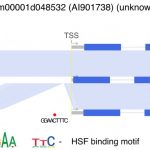Chong Teng: The Plant Cell First Author

 Chong Teng, co-first author of “A cascade of bHLH-regulated pathways program maize anther development”
Chong Teng, co-first author of “A cascade of bHLH-regulated pathways program maize anther development”
Current Position: Research Scientist, Donald Danforth Plant Science Center, USA
Education: Undergraduate degree in Biology at Chinese Agriculture University (CAU) and PhD in Genetics from Dr. Jianru Zuo’s laboratory in Institute of Genetics and Development Biology (IGDB), Chinese Academy of Sciences (CAS), both located in Beijing.
Non-scientific Interests: Plants, nature, traveling and food.
Brief bio: Thanks to all my mentors and colleagues, I experienced beauties of plant biology in many ways! Back from a field trip for the plant taxonomy and shocked by the beauty and diversity of plants, my first work on Arabidopsis suspension cells in Prof. Weihua Wu’s lab in CAU showed me plant cell plasticity with exogenous phytohormones. After brief rotations in the labs of Dr. Xiaofeng Cao, Dr. Weicai Yang, and Dr. Qi Xie at IGDB, I focused on male sterility in Dr. Jianru Zuo’s lab at IGDB for my Ph.D. research. Next, I worked on cryptochromes in Prof. Bin Liu and Prof. Chentao Lin’s lab at Institute of Crop Sciences. Special thanks to Prof. Yan Liang, for teaching me positive thinking when there is an “impossible” result!
Then I joined Dr. Blake Meyers lab at DDPSC, working on phasiRNAs closely with Prof. Virginia Walbot’s (Ginny’s) lab at Stanford and Prof. Bing Yang’s lab at the University of Missouri. People in the Meyers lab continually amaze me with experiments showing how powerful and informative the new generations of sequencing can be. I have also been so lucky to have CRISPR-Cas9 generated maize mutants from Prof. Bing Yang’s lab, to initiate important studies. And I’m always impressed by the beautiful universe of maize biology and critical thinking from Ginny and her lab members. Last but not least, I’m grateful to learn scientific wisdom from Dr. James Carrington and many more colleagues at DDPSC.
I am currently working on cohorts of novel “plant piRNAs” — the maize meiotic 24-nt phasiRNAs. In collaboration with Ginny’s lab at Stanford, we established a detailed spatiotemporal analysis of 24-nt phasiRNAs that demonstrated tapetal accumulation in maize anthers; then, we showed deficiency of a key gene in 24-nt phasiRNA biogenesis – Dcl5, causes delayed tapetum and confers temperature-sensitive male sterility. Most recently, we found out three bHLHs – MS23, MS32 and bHLH122, determine tapetum cell fate and define spatiotemporal specificity of 24-nt phasiRNA biogenesis. Now, I’m focusing on finding the mysterious targets of 24-nt phasiRNAs and their roles in reproductive development. We hope The Plant Cell readers will find our work interesting and exciting as we do!



